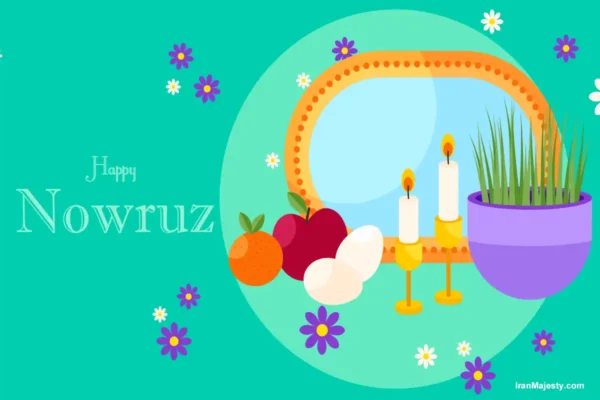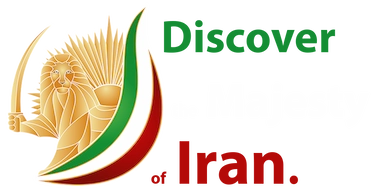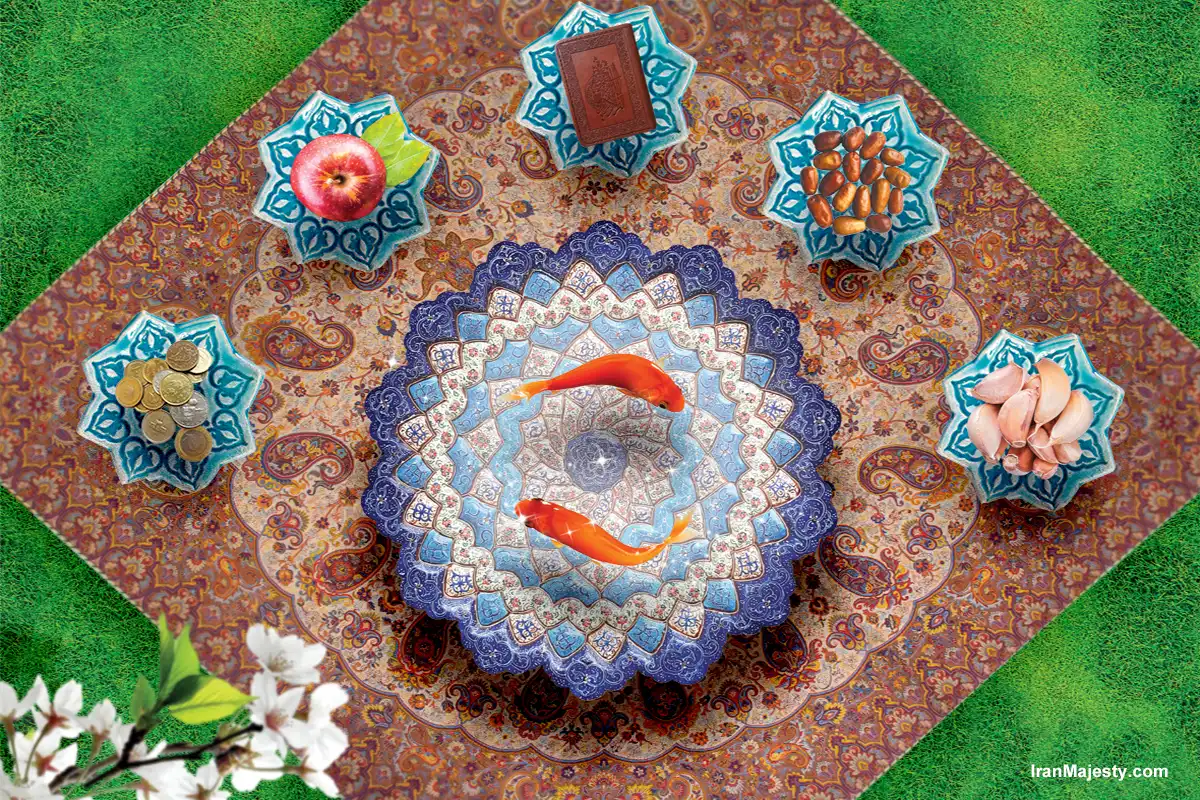Imagine stepping into a home during Nowruz, the Persian New Year. The air is filled with the scent of freshly baked sweets and the joy of family reuniting. As you enter the living room, you are greeted by the sight of a beautifully arranged Haft-Seen table—a traditional setup of seven symbolic items. Each object on the table tells a story, from the green sprouts symbolizing growth to the goldfish representing life and movement. You may notice a shiny mirror, reflecting the faces of those gathered, a reminder of self-reflection and new beginnings. This display isn’t just decoration; it’s a piece of living history, an intricate part of a culture that has been passed down through generations. One person who had the opportunity to experience this told me about their first encounter with the Haft-Seen. They were struck by how much thought and meaning went into each item on the table. “It wasn’t just about the beauty,” they said. “It was about feeling connected to something much larger, something ancient and deeply rooted in tradition.” This story isn’t unique. For many, setting up the Haft-Seen table is a meaningful experience, connecting them to their heritage and bringing their families closer together. If you’re interested in learning more about Haft-Seen and how to prepare this beautiful tradition, keep reading. You’ll discover not only the significance of each item, but also how you can create your own Haft-Seen, infusing it with both personal meaning and cultural richness.
Tracing the History: The Origins of Nowruz and Haft-Seen
The Haft-Seen tradition is deeply intertwined with the history of Nowruz, a festival that dates back over 3,000 years to ancient Persia. Originating in Zoroastrianism, one of the world’s oldest monotheistic religions, Nowruz was celebrated as a reflection of harmony between humans, nature, and the cosmos. The Haft-Seen evolved from earlier customs that emphasized the renewal of life and the arrival of spring.
Initially, Persian households prepared a symbolic table known as the Haft-Shin, featuring items starting with the letter “Sh” (shin). Over time, this evolved into the Haft-Seen we recognize today, with items beginning with “S” (seen) replacing the original list. This shift is believed to have occurred during the Islamic period, as cultural traditions adapted while preserving their core values.
Each Haft-Seen item symbolizes a specific aspect of life, such as health, wealth, or wisdom, and reflects the agrarian roots of Persian society. For example, sabzeh (sprouted wheat or lentils) signifies rebirth and growth, while samanu (a sweet wheat pudding) represents power and strength. These items connect modern celebrations to the agricultural and spiritual practices of ancient Persians.
Throughout centuries of political and cultural change, the Haft-Seen has remained a resilient symbol of Persian identity and heritage. Whether displayed in a royal court or a modest village home, the Haft-Seen carries the essence of Nowruz, linking generations through shared customs and universal values of renewal and hope. Its enduring presence underscores the importance of preserving cultural traditions in a rapidly changing world.
“Here’s an engaging video by DiscoverLearn on Understanding Nowruz Haft-Seen Table. I’m sharing it here to give you visual context—many thanks to the creator for their expertise.”

Seven Symbolic Items: A Guide to the Key Components of Haft-Seen
The Haft-Seen table is the centerpiece of Nowruz celebrations, symbolizing life, renewal, and prosperity. It features seven main items, each beginning with the Persian letter “س” (seen), carefully chosen for their symbolic significance. Below is a detailed explanation of these key elements:
- Sabzeh:
Symbolism: Represents rebirth, growth, and the renewal of life.
Details: This is a dish of sprouted wheat, barley, or lentils, grown in a shallow dish. The process of nurturing the sprouts aligns with the seasonal theme of regeneration and the start of a new agricultural year. - Samanu:
Symbolism: Represents strength and power.
Details: This sweet wheat pudding is made from germinated wheat, which is slow-cooked to achieve a rich, caramelized flavor. It reflects the patience and perseverance required in life. - Senjed:
Symbolism: Associated with love and wisdom.
Details: Dried oleaster fruit (wild olive) is believed to inspire wisdom and enhance love in relationships, making it an integral part of the Haft-Seen. - Seer:
Symbolism: Represents health and protection.
Details: Garlic cloves are included for their medicinal properties and their role in warding off evil spirits, connecting the tradition to ancient beliefs in purification. - Seeb:
Symbolism: Reflects beauty and health.
Details: Apples are chosen for their vibrant appearance and association with physical and spiritual well-being. - Somāq:
Symbolism: Represents the sunrise and patience.
Details: Sumac berries, often used as a spice, symbolize the triumph of light over darkness and bitterness over hardships, echoing Zoroastrian themes. - Serkeh:
Symbolism: Represents aging and patience.
Details: Vinegar, made through a slow fermentation process, signifies the rewards of perseverance and the balance between sour and sweet experiences in life.
Enhancing Your Haft-Seen: Additional Items and Their Meanings
While the seven symbolic items of Haft-Seen are the primary focus, many families enrich their tables with additional elements that carry cultural, spiritual, or personal significance. These items add depth to the display, reflecting individual values, beliefs, and creativity.
- Mirror
Symbolism: Mirrors symbolize self-reflection, clarity, and the exploration of one’s inner self. Placed at the center of the Haft-Seen, they invite individuals to look inward as they embark on a new year filled with possibilities. Historically, the mirror’s reflective nature was also seen as a way to multiply blessings.
- Goldfish
Symbolism: The goldfish represents life, vitality, and the constant movement of time. It is one of the most visually striking elements of the Haft-Seen. Although modern environmental concerns encourage the use of symbolic alternatives, such as ornaments or drawings, the goldfish remains a beloved addition in many households.
- Candles
Symbolism: Representing enlightenment, hope, and the presence of spiritual guidance, candles are often lit and placed around the table. Their flickering light echoes ancient Zoroastrian practices where fire symbolized purity and divinity.
- Decorative Eggs
Symbolism: Painted eggs symbolize fertility and the continuation of life. Families often involve children in decorating eggs, making it a fun and colorful tradition that adds joy and personalization to the table.
- Holy Books and Poetry Collections
Symbolism: Many households include a copy of a holy book, such as the Quran, Bible, or Torah, as a symbol of faith. Others may choose to display poetry collections by Persian masters like Hafez or Rumi, celebrating Iran’s rich literary tradition.
- Coins
Symbolism: Coins symbolize wealth and prosperity for the coming year. They are often arranged in neat stacks or scattered artistically to signify abundance.
- Spring Flowers
Symbolism: Hyacinths and tulips are common choices, representing the arrival of spring and the beauty of nature. Their vibrant colors and fragrances enhance the visual appeal of the table.
- Personal Touches
Some families include items with personal or regional significance, such as photographs, heirlooms, or handcrafted decorations. These additions make the Haft-Seen a unique and meaningful reflection of each family’s story.

Step-by-Step Guide to Preparing a Beautiful Haft-Seen Table
Creating a Haft-Seen table is a cherished tradition that requires thoughtful preparation, as every item holds symbolic meaning. Whether you’re an Iranian hosting Nowruz for the first time or someone interested in experiencing this cultural treasure, this guide will help you assemble a meaningful Haft-Seen display.
Step 1: Understand the Symbolism
Begin by familiarizing yourself with the seven symbolic items
Step 2: Gather Additional Elements
While the seven “Seens” are essential, additional items can enhance the display
Step 3: Choose a Base
Select a sturdy and attractive surface for your table. Many people use a low coffee table or a special family heirloom tablecloth as a base. The design of your Haft-Seen reflects your personality and creativity, so take time to choose materials and colors that resonate with you.
Step 4: Arrange the Items
Carefully place the seven “Seens” prominently in the center. Arrange them in symmetrical or visually balanced patterns to enhance the table’s aesthetic appeal. Surround these core items with the additional elements to create layers of meaning and beauty.
Step 5: Personalize Your Table
Add elements that represent your family’s unique story or heritage. This could include photographs, handwritten notes of gratitude, or crafts made by children. Incorporating these personal touches creates a deeper connection to the tradition.
Step 6: Maintain and Refresh
As Haft-Seen tables are typically displayed for the duration of Nowruz (13 days), ensure the items remain fresh. Replace wilting flowers or sprouted greens as needed, and keep the arrangement tidy.
Step 7: Invite Participation
Haft-Seen is not only a visual centerpiece but also a focal point for family gatherings. Encourage guests to share their reflections on the symbolism, take photos, or contribute their own touches to the table.
Tips for Success
- Plan Ahead: Collect the seven items well in advance to avoid last-minute stress.
- Be Resourceful: If some items are hard to find, use symbolic alternatives, such as artificial goldfish or sprouted seeds from common legumes.
- Celebrate Creativity: There’s no “right” way to prepare a Haft-Seen. Embrace your individuality while honoring the tradition.
By following these steps, your Haft-Seen will not only reflect the essence of Nowruz but also become a cherished symbol of renewal and hope.
Haft-Seen’s Role in Celebrations: Family, Culture, and Togetherness
The Haft-Seen table serves as the heart of Nowruz celebrations, bringing families together to honor ancient traditions and welcome the new year. Its role extends beyond a decorative centerpiece; it symbolizes shared values, hopes, and the continuity of life.
A Gathering Point for Families
During Nowruz, families often gather around the Haft-Seen table to mark the exact moment of the vernal equinox, which signifies the start of the Persian New Year. This ritual, called Tahvil-e-Saal, is accompanied by prayers or silent wishes for prosperity, health, and happiness in the coming year. Each item on the table sparks conversations about their meanings, fostering a sense of connection among family members.
Symbolism of Togetherness
The Haft-Seen acts as a collective expression of cultural identity and shared heritage. As families sit together, they reflect on the past year’s challenges and achievements, strengthening bonds through storytelling, laughter, and expressions of gratitude.
Part of Broader Festivities
The Haft-Seen is integral to Nowruz traditions, which often include visiting relatives, exchanging gifts, and sharing meals. It becomes a visual reminder of renewal and unity during these gatherings. Guests typically admire the host’s table, offering compliments and sometimes contributing their symbolic items, which deepens the collaborative spirit of the season.
Educational Value for the Next Generation
For children, the Haft-Seen serves as a learning experience. Elders explain the symbolism behind each item, ensuring the younger generation understands and cherishes the cultural significance of Nowruz. This role as a teaching tool helps preserve the tradition for future generations.
A Source of Joy and Inspiration
Beyond its symbolic meaning, the Haft-Seen table adds joy to Nowruz celebrations with its vibrant colors and artistic arrangements. It inspires creativity as families personalize their displays, incorporating elements that reflect their unique stories or contemporary touches while maintaining the tradition’s essence.
In essence, the Haft-Seen transforms the act of welcoming the new year into a rich, shared experience that celebrates family unity, cultural pride, and the timeless values of hope and renewal. Its role in family gatherings ensures that the spirit of Nowruz thrives in every home, from Iran to the far corners of the world where the tradition is cherished.
Expert Tips for a Meaningful and Memorable Haft-Seen Display
Creating a Haft-Seen table is an enjoyable yet meaningful activity that requires thoughtful preparation. Here are some practical tips to help you craft an impressive display:
- Start Early
Begin gathering the seven symbolic items (Sabzeh, Senjed, Seer, Seeb, Samanu, Serkeh, and Somāq) well before Nowruz. Growing Sabzeh (sprouted greens) takes around 10-15 days, so plan accordingly. - Choose a Balanced Design
Select a table or surface that allows for an aesthetically pleasing arrangement. Traditional elements can be paired with modern touches like fairy lights, candles, or decorative trays. - Incorporate Personal Touches
While adhering to the symbolism, include items that resonate with your family’s personality, such as unique mirrors, heirloom tablecloths, or handmade decorations. - Maintain Freshness
Keep fruits like apples and pomegranates fresh by placing them closer to Nowruz. Replace wilting Sabzeh as necessary to keep the display vibrant throughout the celebration. - Highlight Symbolism
Use labels or small cards to explain the significance of each item. This is especially valuable for visitors unfamiliar with the tradition, turning the Haft-Seen into an educational and cultural showcase.
“Check out this informative video by Quartz, embedded here to enrich your understanding of Understanding Nowruz Haft-Seen Table: 7 main and more Additional Elements of Haft-Seen. A special thanks to the creator for their fantastic work.”

Conclusion: Preserving the Timeless Tradition of Haft-Seen
The Haft-Seen table is far more than a simple decorative element of Nowruz—it embodies the hopes, values, and rich heritage of Persian culture. Its enduring appeal lies in its ability to unite families, inspire creativity, and celebrate renewal. For Iranians and those who embrace Nowruz worldwide, the Haft-Seen remains a vibrant symbol of spring’s arrival and humanity’s shared appreciation for life’s beauty and possibilities.
By understanding its deeper meanings and crafting your own table, you can participate in a tradition that has spanned millennia, fostering connection and joy. Whether you’re a newcomer exploring Nowruz or someone reconnecting with your roots, the Haft-Seen is a reminder that the start of the year can be as much about reflection and growth as it is about celebration.


0 Comments